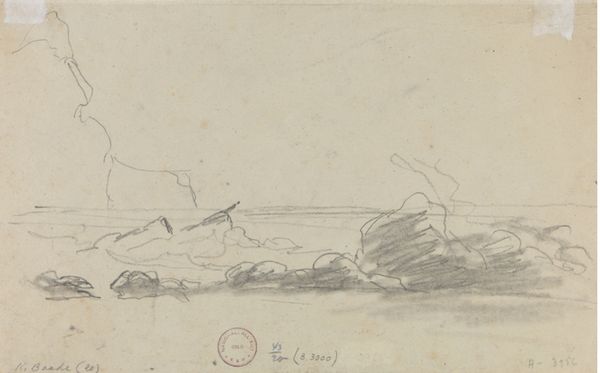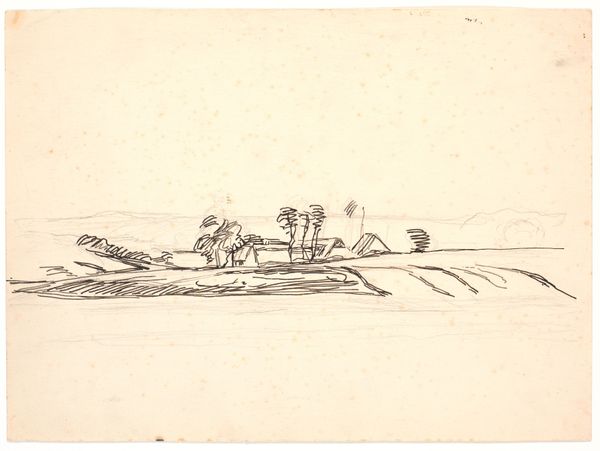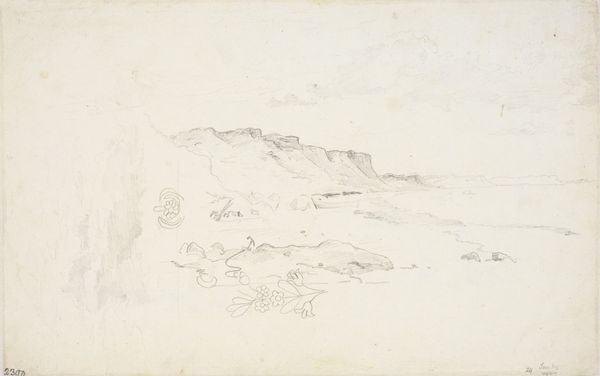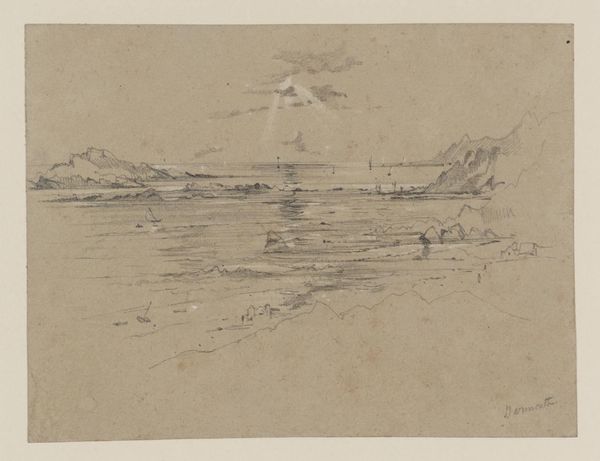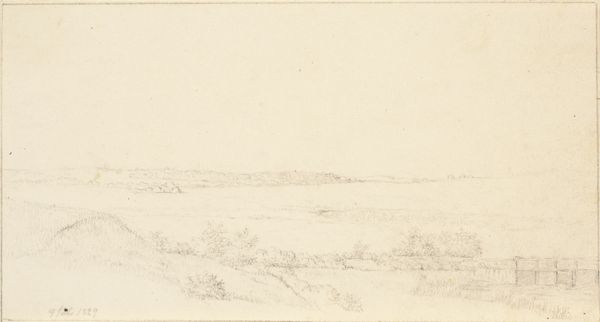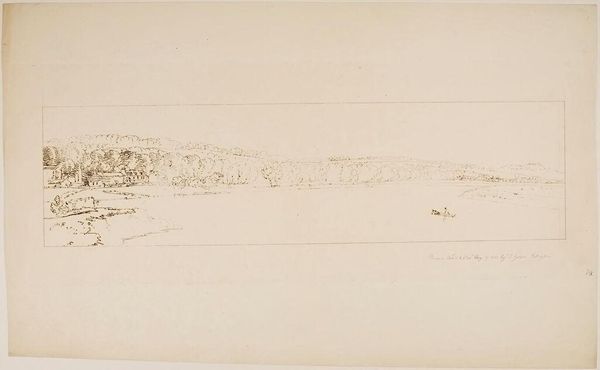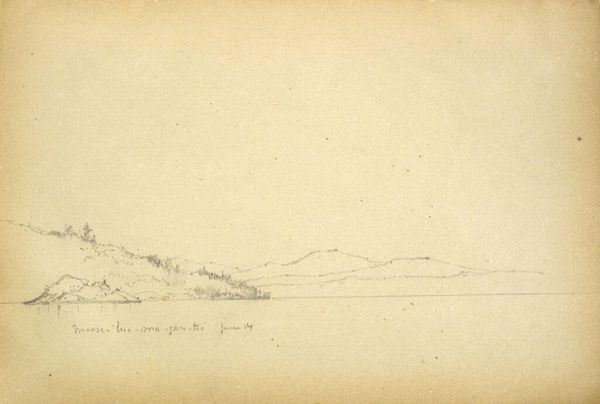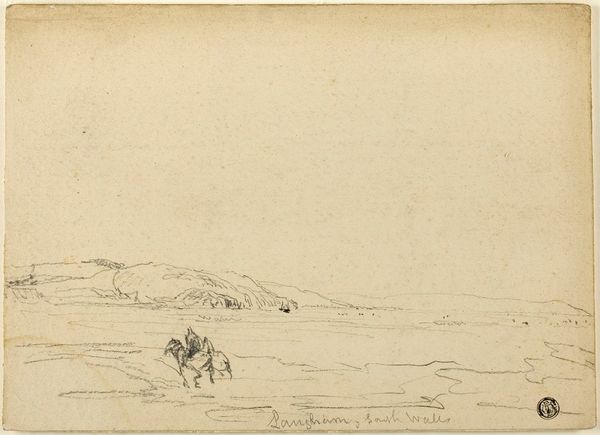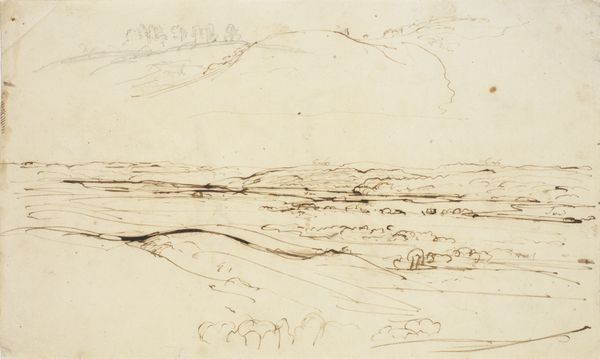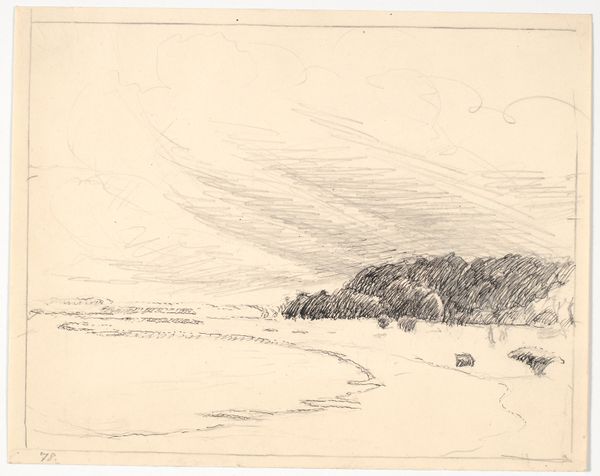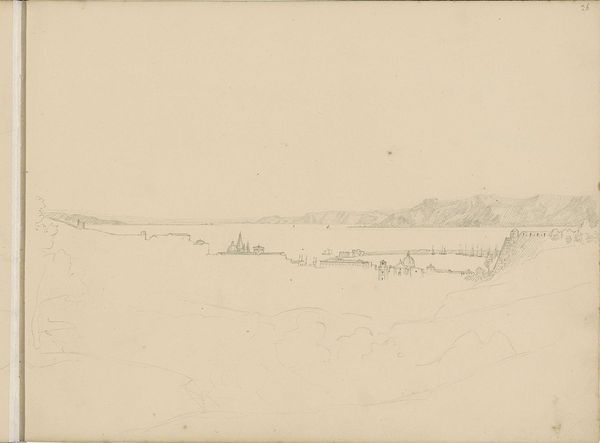
Dimensions: 290 mm (height) x 584 mm (width) (bladmaal)
Editor: This is P.C. Skovgaard's "Vidtstrakt landskab, t.h. bakker og i forgrunden heste," or "Sweeping landscape with hills to the right and horses in the foreground," from 1852. It's an ink drawing. I’m struck by the sparseness of it all, and wonder about the choice to use such delicate lines. What can you tell me about this work? Curator: This drawing offers a glimpse into 19th-century Danish Romanticism, which, like other national Romantic movements, grappled with questions of identity. Notice the vastness of the land depicted; the landscape wasn't simply scenery. It was intertwined with the construction of a national identity. How do you see the horses fitting into this interpretation? Editor: Hmm, the horses seem... almost like part of the landscape itself, free, maybe even wild. Perhaps they symbolize the natural resources or the rural life associated with Danish identity at the time? Curator: Precisely! Consider, too, who had access to this land and who benefitted from it. Whose story does this idyllic scene obscure? It's critical to acknowledge whose labor made these leisurely depictions possible and to look beyond a simply celebratory or nostalgic reading of Skovgaard's image. Editor: That’s a great point. I was only thinking of it aesthetically and didn't consider the social dynamics that may have influenced it. Curator: The choice of medium, ink on paper, also speaks to accessibility. Drawings were often studies for larger paintings but also were, in their own right, a means for artists to disseminate and for audiences to acquire images. In a pre-photographic era, how did these landscapes contribute to a collective understanding of what it meant to be Danish? Editor: So it becomes part of nation-building through image-making? Wow, that definitely gives me a lot more to think about. Thanks! Curator: Absolutely! The key is to consider the social and historical contexts shaping both the creation and reception of art. Every line, every choice, is laden with meaning waiting to be unpacked.
Comments
No comments
Be the first to comment and join the conversation on the ultimate creative platform.


